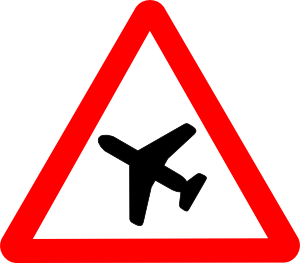What?
In legal terms, liability is "The quality or state of being legally obligated or accountable; legal responsibility to another or to society, enforceable by civil remedy or criminal punishment." (*2)
Huh?Yeah, it can be confusing to lawyers, too. In fact, that same legal dictionary entry cross-references 32(!) specific types. We won't go through them all, but there are a couple of general things you need to know. First, liability always means that a person (let's call him Andy) owes something to either an individual (Bob) or society as a whole (Country). (*3) Second, liability isn't a suggestion; Bob or Country have a right by law to extract whatever money, time, or other resource Andy owes them. That right really means something: in most civil cases, Bob can sell it for cash to a willing buyer just like any other asset. In every criminal case, it gives Country the right to throw Andy in jail (or enforce some other penalty).
So...what makes Andy liable?There are a whole lot of ways to get there, but there are the three main ones you usually learn in your first year of law school.
- Contract. "Sell you my horse for $125," Andy says. Bob shakes his hand and beams, "contract say we all." (*4) Bob is now liable to Andy for $125, and Andy likewise owes Bob a horse. The necessary pieces of any contract are an offer, an acceptance, consideration (basically a price), and (sometimes) a writing that satisfies the statute of frauds. (*5)
- Tort. If Andy steals Bob's plane (and Bob can prove it in court), Andy is liable to Bob for the cost of that plane. (*6)
- Criminal. If Andy steals Bob's plane, and Country proves it in court, Andy owes Country jail time.
Wait...Andy's liable to Bob and Country for the same theft?Yeah, though he owes them different things. With a few exceptions, Andy's going to owe Bob money and Country time. These are called civil and criminal penalties, respectively. Those categories break down on occasion - Andy could owe Bob labor (specific performance) or Country money (fines, civil forfeiture, etc...) - but those are your general silos.
 |
| "I can't stall. I'm on a mission from me." |
Do I need to be worried about this?Yes, unless you're sinless. Liability is the only reason most lawyers ever have any business, and as you've probably heard it said, everyone needs a good lawyer at least once in his or her life. Liability doesn't always depend on intent; sometimes it doesn't even require any particular mental state.
Where?
So Bob can just take Andy's money?Not exactly. Liability is different from cash in hand in that you can't legally use force to make a debtor cough up that cash. Only society has that authority, so Bob has to go through the civil court system (usually some kind of State court) to get a "judgment" against Andy. Lawyers call this "civil procedure," and there are a jillion rules about how and how not to do it. If Bob does end up getting a judgment in his favor, Andy's resources can be forced away from him by the court's authority under penalty of indefinite jail time.
It works roughly the same way on the criminal side: Country can't just throw Andy into prison because it thinks Andy did something wrong. Instead, it has to prove to a court that it has a good reason for charging Andy, and then has to actually haul Andy into court to sort the whole thing out. That's "criminal procedure."
One major difference between the two is that criminal (but not civil) defendants have a constitutional right to legal counsel, which the court can appoint to that defendant. That means Andy has a right to a lawyer when Country comes after him, but not when Bob does.
When?
Is there something I can do before this all goes down to save my skin?You bet. There are two steps every pilot ought to take to cut down on the potentially catastrophic effects legal liability can have on your life.
First, reduce your risk. Yes, I'm serious: the best way to avoid liability is to avoid liability, and we all know most accidents have pilot error as a primary factor. There are a jillion ways to do this, but here are a few ideas you should take seriously:
- Make good decisions on the ground. Know your weather, terrain, fuel/endurance, and other operational limits and stick to them. Have a plan for the foreseeable. Above all, know thy airplane. If you listen at all to The Finer Points, you may have heard Jason Miller's philosophy on pre-flights; approach your inspection assuming there's some reason your bird can't fly, and make it your mission to find it. If you fail, you may proceed.
- Make good decisions in the air. I know I'm not the only pilot who chuckled the first time he hear Aeronautical Decision Making (ADM) was an actual portion of ground instruction, but it's serious stuff. Specifically, consider your pneumonic devices and whether you can actually run through them in a pinch. Get yourself into a simulator and see how you do with various system failures or emergent weather. If your pneumonics fail you, work out the kinks or find something else - I'm a fan of visual or tactile flows.
- Use SOPs. I promise The Finer Points hasn't paid me to do any advertising here, but Jason has an ebook out that talks a lot about this. Standard operating procedures are a huge part of what helps airlines achieve a safety record more than two hundred times better than their general aviation counterparts, and constantly reevaluating your SOPs is as important as using them.
- Maintain your proficiency, not just your currentness. Don't get in the air (or let anyone else get you in the air) unless you feel totally confident in your ability to get back down. There are all kinds of "rusty pilot" resources available if you haven't done it for awhile, and CFIs are always happy to give an extra check-up. If you're in an area with challenging terrain or regular visibility issues, consider some aerobatic or instrument training. You'll enjoy the challenge and become an all-around better pilot.

Second, buy some sensible liability insurance. No, your FBO's rental insurance is not enough. I'll probably be doing another article to demystify insurance for pilots in the future, but you know the basics: you pay a company money each month/year/whatever in exchange for their promise to pay if someone makes a claim against you. On its face, that's a very simple contract. In reality, of course, it gets stickier. You can't buy criminal insurance for reasons that should be pretty obvious, but you can buy all the civil liability insurance you want from anyone willing to bear the risk that you'll actually come a-calling.
How?
So what does all this have to do with that NYT article?Fowler spends most of the article lambasting the safety record of General Aviation with questionable figures, but does offer an intriguing proposition: what if having liability insurance actually makes pilots safer? His basic argument is that insurance companies are harder on pilots than the FAA, and higher standards make for safer pilots.
Regardless of the merits of that argument in the context of aviation, insurers in other sectors seem to believe they can reduce the claims made by or against the people they insure by modifying their behavior. You see this fleshed out in safe driver discounts, Progressive's Snapshot program, Farmers' 15 Seconds of Smart ads, wellness programs, and a host of other means.
Manufacturers have also gotten into this game, especially with high-performance and homebuilt aircraft. They've realized that it's cheaper to train pilots and give them a discount on their insurance than to insure them without that additional training. The hyped-up concern around those aircraft may or may not be overdone, but if too much caution saves one life, the juice is worth the squeeze.
Why?
I only fly solo, in clear weather, over perfectly flat terrain, immediately after complete inspections, in unpopulated areas. Why should I care?First of all, you're a liar. Nobody's perfect, and mistakes are as much a part of aviation as any other facet of human life. We all know this, but there's something about also knowing we can lurch a heavier-than-air machine into the clouds and bring it back again that makes us pilots feel like saints, or maybe wizards. You should care because you have made and will continue to make mistakes, and just because they have been cheap so far doesn't mean they'll stay that way.
Second, you should care because liability doesn't just affect you. Depending on your financial planning, family situation, business organization, and a host of other factors, incurring a big financial burden on yourself could put the people around you into debt if you don't have an insurer lined up to step in.
Third, you should care, but you shouldn't let that worry drive you from aviation. We all know or learn the risks of this passion through our observation, training, and pilotage, and while we can continue to improve there will always be something inherently risky about sitting thousands of feet above the surface of the earth. Responsibility makes the world go 'round, but a life lived out of fear is no life at all.
--
*1 If you are an aviation lawyer and want to advertise on this site, please let me know. I am a poor law student and will plug you shamelessly.
*2 Black's Law Dictionary 997 (9th ed. 2011).
*3 Technically, Bob could be a couple of people, or a partnership, or a corporation, or anybody else that's not "society." You get the idea. I'm pushing civil/criminal here, not individual/collective.
*4 Shamelessly stolen from papa Works' entire first year Contracts class. I'm proud to be a disciple.
*5 I'm not going to explain the statutes of frauds, but they do matter. Basically, they mean that certain kinds of contracts have to be in writing or there's no deal at all.
*6 Again, I'm not going into replacement cost, fair market value, or any of that. Ask a lawyer.
*3 Technically, Bob could be a couple of people, or a partnership, or a corporation, or anybody else that's not "society." You get the idea. I'm pushing civil/criminal here, not individual/collective.
*4 Shamelessly stolen from papa Works' entire first year Contracts class. I'm proud to be a disciple.
*5 I'm not going to explain the statutes of frauds, but they do matter. Basically, they mean that certain kinds of contracts have to be in writing or there's no deal at all.
*6 Again, I'm not going into replacement cost, fair market value, or any of that. Ask a lawyer.





















